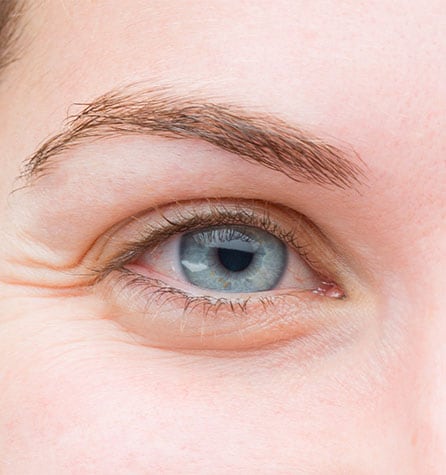Understanding the Various Vision Adjustment Procedures Available for Clearer View
In the realm of vision correction treatments, a plethora of options exist to deal with refractive errors and give people with clearer sight. From the commonly recognized LASIK surgical treatment to less intrusive treatments like PRK and implantable lenses, the field of ophthalmology uses a variety of techniques tailored to match various requirements and choices. Each procedure features its very own collection of considerations, advantages, and prospective threats. Recognizing the nuances of these vision modification methods is essential for making educated choices regarding one's visual health. Let's discover the complexities of these treatments and lost light on the course to accomplishing enhanced vision clearness.
LASIK Surgical Procedure
LASIK surgical procedure is an usual refractive procedure utilized to deal with vision troubles such as farsightedness, nearsightedness, and astigmatism. This surgical strategy, which represents Laser-Assisted in Situ Keratomileusis, intends to reshape the cornea to enhance just how light is concentrated on the retina, eventually boosting vision clearness. During the treatment, a slim flap is developed on the cornea, and a laser is utilized to get rid of specific quantities of tissue to improve it suitably. This reshaping enables light to be accurately concentrated onto the retina, fixing refractive errors.
One of the key advantages of LASIK surgery is the rapid renovation in vision experienced by patients. On the whole, LASIK surgical treatment is a preferred selection for individuals seeking a lasting remedy for their vision issues.
PRK Treatment

PRK is an ideal option for people with thin corneas or those at a greater threat of eye injuries, as it does not involve producing a corneal flap. The healing process for PRK is somewhat longer compared to LASIK, as the epithelium requires time to regenerate. People might experience discomfort and fuzzy vision for a couple of days adhering to the treatment.
Despite the longer recuperation time, PRK can yield superb outcomes in vision renovation, making it a useful option for those who may not be appropriate candidates for LASIK surgical procedure. - Eye Doctors in Andalusia
Implantable Lenses
As opposed to PRK where the cornea is reshaped directly, implantable lenses supply an additional method for correcting vision by placing fabricated lenses inside the eye. This treatment is particularly beneficial for individuals with high levels of farsightedness, nearsightedness, or astigmatism who might not be ideal candidates for laser surgical treatments like LASIK or PRK.
Implantable lenses, also referred to as phakic intraocular lenses, job by supplementing the eye's all-natural lens with an artificial one. These lenses can be put before the all-natural lens (former chamber) or behind the iris and in front of the all-natural lens (posterior chamber) By readjusting the power and positioning of these lenses, eye doctors can efficiently deal with refractive mistakes and enhance aesthetic acuity.
One benefit of implantable lenses is that they are exchangeable and removable, providing adaptability for future changes. Nonetheless, similar to any type of surgical treatment, there are threats involved, such as infection or cataract development. People taking into consideration implantable lenses must speak with an eye treatment professional to determine the most suitable option based upon their individual demands and eye health.
Corneal Rings

The procedure for inserting corneal rings is minimally invasive and reasonably quick, frequently carried out as an outpatient procedure. During the surgery, the eye doctor makes a little cut in the cornea and inserts the rings at a specific depth. As soon as in position, the rings help to improve the cornea, supplying a smoother surface for light to go into the eye, which can result in more clear vision.
Corneal rings are taken into consideration a relatively easy to fix procedure, as they can be eliminated or replaced if required. While they may not entirely remove the requirement for glasses or get in touch with lenses, corneal rings can considerably enhance vision top quality and general visual convenience for people with keratoconus or other corneal irregularities.
Refractive Lens Exchange
Adhering my company to the adjustment of corneal irregularities with treatments like corneal rings, one more vision adjustment technique that can address refractive mistakes is Refractive Lens Exchange (RLE) RLE is a surgery that includes changing the eye's natural lens with a synthetic intraocular lens (IOL) to deal with refractive mistakes such as farsightedness, nearsightedness, and presbyopia. This procedure is especially valuable for individuals who may not be ideal candidates for procedures like LASIK or PRK due to aspects such as slim corneas or high refractive errors.
RLE is similar to cataract surgery, as both involve getting rid of the eye's natural lens; however, in RLE, the lens is clear, not over cast as in cataracts. The man-made lens implanted during RLE can be customized to resolve the person's certain refractive mistake, providing clear vision at various distances. Recuperation time for RLE is relatively fast, and individuals can anticipate better vision soon after the procedure. Just like any procedure, potential risks and problems exist, so a comprehensive assessment with an eye treatment specialist is vital to determine if RLE is the best vision adjustment choice.
Conclusion

In the world of vision modification treatments, a plethora of choices exist to deal with refractive important source mistakes and provide people with clearer sight.LASIK surgery is a common refractive procedure made use of to remedy vision troubles such as farsightedness, astigmatism, and nearsightedness.While likewise an usual refractive treatment, the PRK (Photorefractive Keratectomy) technique varies from LASIK surgical procedure in its method to fixing vision problems.Adhering to the adjustment of corneal irregularities with treatments like corneal rings, another vision improvement strategy that can resolve refractive mistakes is Refractive Lens Exchange (RLE) LASIK surgical treatment, PRK treatment, implantable lenses, corneal rings, and refractive lens exchange are all alternatives that can deal with various vision concerns.